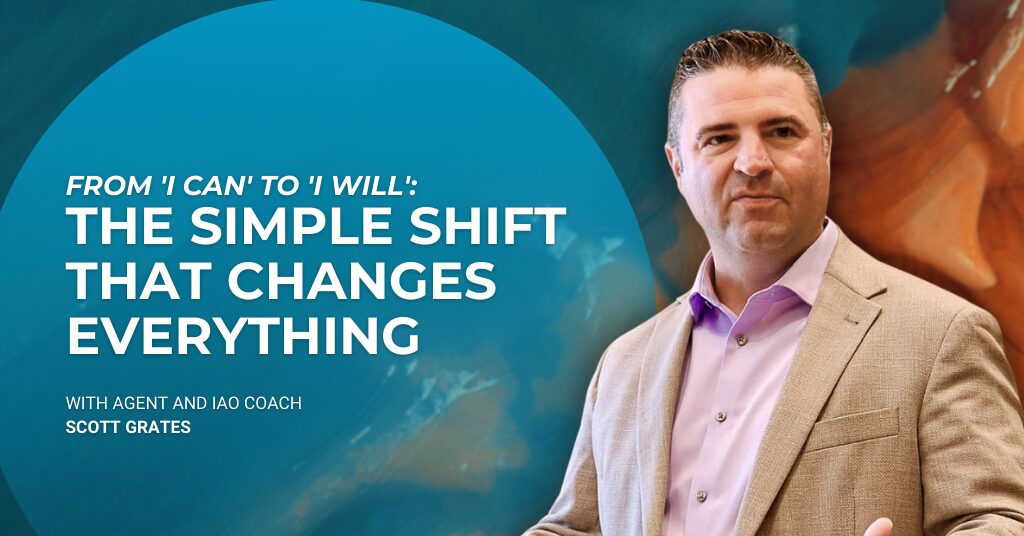
When I started as a new Agent in a new market, I had no “policies billed previous week” report. I had no existing book to lean on for financial services.
This meant I had to develop a process to go broader and deeper into our new business — get up in the customer’s business, so to speak — that ultimately helped me and my team develop good habits for the long term.
I’m referring to the IFR process.
(We know you know, but in case there are some reading this who don’t: IFR is Insurance Financial Review.)
The process involved getting to know our brand new customers and building the relationship right out of the gate. We wanted to figure out who the customer is and deepen the relationship right from the get-go. We used the 100% IFR process.
Here is how the IFR process works:
With a new customer, the sales team member who wrote that business explains that the new customer had to meet with me (the Agency owner).
They explain that at our Agency, Scott, the owner, wants to meet with all of the new customers for a short 15 minutes to walk through the coverage and get to know you a little.
This was very important because when we first write a policy with a customer, it’s what we refer to as the “honeymoon phase.” The customer is as happy as they’re ever going to be with us. They are leaving their current carrier and putting their trust in us.
This is also the most vulnerable period.
If you look at your book’s lapse cancellation rate, that zero to three-year period is when a customer is most likely to leave you.
Therefore, we have to make sure that we’re getting in front of them. And, it’s also an opportunity to deliver on the promise that we made during the sales process: we talk about being unique, being different and better than the competition, doing things that others won’t, and others don’t.
We consistently heard from people who switched to us is that they rarely or never heard from their prior insurance Agent.
That is exactly who we do not want to be.
So our salesperson schedules a meeting with me, the Agent (or a top producer in your Agency, if you so choose), to meet with the new customer two weeks from “today.” It can sound like this:
“We’ll schedule for two weeks from today. Tuesday at 4:00 seems to be a good time for you (today’s appointment was at 4:00) so let’s go with DATE at 4. This will be for a short 10-15 minutes conversation with Scott.”
Immediately following, we give them a folder with their paperwork.
We put their ID cards on one side of the folder, and we left the other side empty intentionally. We explain that they will be getting several pieces of mail over the next two weeks. We ask them to put all of that in the empty side of the folder and bring it to the next appointment. Going through what they receive–and why–is another unique thing we offer the customer. We also helped them make sure that they correctly canceled their previous policies.
Next up: the two-week meeting agenda.
The key is to not overthink the meeting when the customer comes in two weeks later. Here is our handy meeting checklist:
- Customer name
- Names of children
- Employer
- What they like to do for fun, any special interests.
- Next, I take the opportunity to introduce myself and explain the mission and vision of our Agency. I chat about anything we have in common, picking up on what they’ve already told me in the first few minutes.
- Then, I ask about their life insurance plan at work. (I don’t ask if they have it. I assume they do, and so I position the question to ask what it is. I also ask if they protect their children with life insurance.)
Check out our 11 common objections to Life Insurance and how to overcome them.
- Next, I ask about their current retirement plans like 401k, 403b, IRAs, CDs, etc.
- Next up is me asking about their home. I talk about the Triangle of Protection: explaining homeowners insurance and the proper life insurance for that mortgage and then income replacement. (We explain the benefits of all of this here)
- I continue asking the customer about having a liability umbrella in place. Do they understand what that is and why it’s important? Do they have any jewelry, collectibles, or things outside of the home policy that we need to protect?
- I make sure they have registered their account online:
- They have their pocket agent app.
- They’ve liked our Agency on Facebook.
- They’ve left us a Google review (If yes, I am sure to thank them for it!).
- I tell them we’re just about done, explaining how our referral program works and how we are 100% referral-based. I state that we’d love to be introduced to any referrals they may have.
- And finally, I schedule an appointment for 11 months later for our next review appointment. It’s right then that I am setting the expectation that we are going to schedule an appointment to review their needs every year. After all, life changes quickly, and we want to be sure that their protection plan is keeping up with their life.
So how does this IFR process shake out in the numbers?
Say you write 20 new households. You schedule the 2-week appointment.
Let’s say all 20 show up.
3 out of 10 will take action immediately during that appointment on a PLUP or a PAP or a DI or a life policy. You give them a solution, and 3 of 10 are going to buy.
That’s 6 financial service products or additional lines of insurance that you are writing just from those appointments.
6 services X 12 months is 72 service products or LOBs. That’s pretty good. A lot of good things happen when you write 72 additional policies.
More than the numbers
This 100% IFR process is a relationship builder.
It’s a retention builder.
It’s a referral builder.
And you’re doing the right thing for the right person at the right moment, which is the most important thing in our business.
As I said initially, I started this IFR process out of necessity — I had to dig deep to learn about my customers so I could see what else I could provide for them. I discovered it worked, and it developed a long-term habit that I continue in my Agency today.
Today, I may not be the one meeting with the customers (I have my top producers take the meetings now). Still, we have learned that it is so imperative to set that first appointment for two weeks out (it’s not optional) and train your customers to meet with you annually right from day one.




